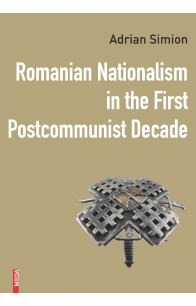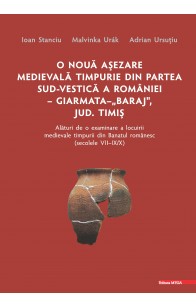Rezultate căutare pentru 'Adrian Arde��'
Romanian nationalism has been and it still is a research topic that has generated and still generates various controversies, both at the level of the opinions of the authors who have dealt with this subject, and at the level of the interpretations that the reader can have on such a topic. And the analysis of the evolution of Romanian nationalism since 1989 is a theme that can be included in this framework of different, and sometimes even contradictory, approaches. Moreover, any analysis of post-communist Romanian nationalism may have its limitations, in terms of the authors’ approaches, and because, in general, approaches to nationalism have a certain potential for inaccuracy. The nationalist phenomenon is very complex because it refers to the people (the nation) and the country and quite often the boundary between nationalism and patriotism, for example, is quite weak. And in the Romanian case, things were even more complicated, both because the nationalism responded to a need for homogeneity existing in the post-communist Romanian society, and because the Romanian nationalism had a specific and quite complex typology.
In this paper, we referred more to those aspects that looked at the presence of nationalism in areas such as society, culture, religion or interethnic relations. Moreover, the period chosen for the study was rather a delicate one, considering the fact that the last decade of the twentieth century was, for Romania, a period of search of the road that the country needed to straighten, after half a century of totalitarian regime. And studying nationalism in such a historical context may have different interpretations, especially since post-communist Romanian nationalism, as some Romanian authors have stated, could be considered as paradigmatic for nationalism in general, because of its subtlety and complexity. (from the „Introduction”)
„The history of the Roman auxilia was for the first time closely examined by C. Cichorius. An early attempt to discuss various topics and aspects related to the place and role of the auxiliary units in the Roman army belongs to G. L. Cheesman. For the study herein, of great significance are the studies of W. Wagner and K. Kraft4, who tackle, others also the units active on the territory of Moesia Superior. J. Beneš approaches the issue of auxiliaries from the two Moesiae and the Dacian provinces, initially in a 1970-study and then in a monograph issued in 1978.
In 1980, P. A. Holder also contributed an article to the basic reference work on the topic of Roman auxilia and their history in the Roman empire during the 1st century AD at a time when the evidence was limited (to some degree represented by military diplomas) and difficult to interpret together with our knowledge on the history auxiliary units known later to be stationed in the mentioned provinces. The special importance of the study consists in the attempt to equate the units recorded in the 1st century with those attested with certainty through 2nd century-military diplomas. The approach has been recently furthered by the publication of two overviews on the displacement of the auxiliaries under Trajan and Hadrian.” Introduction
„A rămas destul de puţin cunoscută evoluţia locuirii medievale timpurii din partea românească a Banatului, cu presupuse schimbări intervenite în decursul vremii, alături de eventuale tendinţe și aspecte specifice. În lipsa altor surse la îndemână, fără îndoială că noi contribuţii sunt de așteptat din partea arheologiei. În ultimele trei decenii, rolul decisiv a revenit săpăturilor preventive, într-o măsură sau alta fiind investigate și în acest spaţiu noi situri, din păcate cu rezultate doar semnalate, cazul celor mai multe dintre ele. Cel de la Giarmata–Baraj a fost identificat în anul 2011 pe traseul Autostrăzii Timișoara–Lugoj, urmând la scurt timp cercetarea arheologică preventivă, susţinută de un colectiv al Institutului de Arheologie și Istoria Artei al Academiei Române din Cluj-Napoca.” (din „Cuvânt-înainte”)
„În urmă cu mai bine de 30 de ani, în timpul uceniciei pe șantierele arheologice ale profesorului Gheorghe Lazarovici, ne-am întâlnit pentru prima dată cu studiile interdisciplinare între arheologie și etnografie, religie etc. La vremea respectivă am considerat aceste inițiative drept un pionierat fără o finalitate în cercetarea fundamentală. La cercetările organizate de profesorul Gheorghe Lazarovici am avut onoarea să-l cunosc pe John Nandriș, care ne-a descchis drumul către această cercetare interdisciplinară. Remarc în mod deosebit aportul de nepreţuit al prof. univ. dr. John Nandriş care pe lângă faptul că a făcut posibilă implementarea unui proiect cu tematică etnoarheologică în România acelor ani a atras atenţia întregii lumi ştiinţifice asupra zonei de sud-est a Europei, mai ales a zonei muntoase înalte a munţilor din România, zone prea puţin explorate. Muzeul pe care astăzi îl conduc are bucuria de a prezenta specialiștilor, și nu numai, o serie de studii aprofundate ale acestui domeniu. Instituția noastră, pe lângă preocupările arheologice, acordă o atenție deosebită cercetărilor etnografice din spațiul Banatului de Munte. (..)
Volumul de față reunește studii deosebit de importante din ultimii 30 de ani, care deschid o nouă perspectivă asupra interdisciplinarității arheologice. Prezenta lucrare este o sinteză a unei munci asidue din partea unor cercetători de renume, care valorifică bogatul patrimoniu arheologic şi etnografic al spaţiului românesc. ” - dr. Adrian Ardeț






